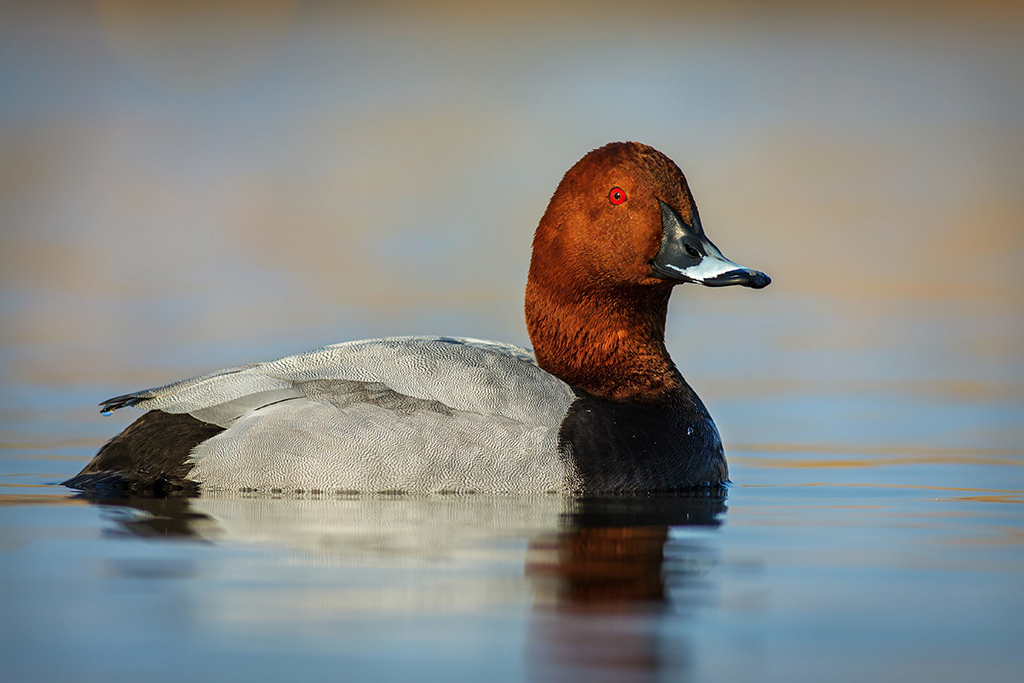
Countryside Alliance hits back at claims over lead
The Countryside Alliance has hit back at claims which attacked the use of lead ammunition.
The Lead Ammunition Group says that the numbers of common pochard, a duck species at risk of global extinction, have fallen substantially over the past 30 years, and this decline can be partly attributed to the fact that they eat some of the 5,000 tonnes of lead pellets discarded in the countryside by people shooting game.
The LAG was created by DeFRA (the Department for Rural Affairs) and delivered its report in 2016. Its conclusions were considered by the Government at the time and were rejected.
Their report says other species affected by lead poisoning include the grey partridge, which is also on the RSPB’s “red list” of threatened species, as well as the golden eagle, common buzzard and red kite.
It said up to 400,000 wildfowl a year may suffer from lead poisoning, causing up to 100,000 deaths.
However, the Secretary of State for the Environment, Food and Rural Affairs wrote to chairman of the LAG to inform him that this rejection ‘marked the end of the group.’
The Alliance argues that this paper is being used to spread conclusions that go far beyond the existing science.
They say that a collection of people continues to call itself the LAG, but it neither reports to Defra nor fulfils the criteria of the original LAG. The Alliance says it is a lobby group that campaigns against lead ammunition. This group has produced a paper called the Lead Ammunition Group Update Report.
This report has received some coverage in the press, with the Countryside Alliance saying it seeks to sensationalise the number of birds affected by lead ammunition, to place a financial value on those birds and suggest population-level impacts on red kite, buzzard and grey partridge.

A male common pochard, a duck species in danger of extinction
Shooting campaigns manager Jack Knott said: ‘The UK already has strict legislation which prohibits the use of lead shot for the shooting of wildfowl and over wetlands, and remains well ahead of many other European countries in restricting the use of lead ammunition.
‘This is significant because most species of wildfowl are migratory and visit a number of countries during migration to and from the UK.
‘The paper posits 400,000 wildfowl suffer lead poisoning every year – this has been extrapolated from countries that have yet to restrict lead shot over wetlands and from data collected before restrictions were put in place in the UK.
‘The paper suggests these birds are worth £16 million, generated from the expected cost of rearing the 400,000 wildfowl. This figure comes from a study in Italy. We have not seen this type of cost/benefit analysis before and we are sceptical of it.
‘With regards to theorised population-level impacts on buzzards, red kites and buzzards, it is well-documented that buzzards and red kites are experiencing unprecedented population booms and a huge amount of private shooting money is being put into conserving the grey partridge.
The conservation of the pochard is of concern to us all, but we should note that it is a classic migratory species which spends much of its life in countries with no restrictions on the use of lead shot over wetlands.
‘In contrast the Alliance thinks it is important to note that at least 55 million birds are killed annually in the UK by cats, yet the RSPB claims this has no population-level impact. Even if the 400,000 figure is taken at face value, these numbers would suggest that the effects of lead ammunition are irrelevant by comparison to the 55 million birds killed by cats.’
Coverage of the report has quoted the new LAG’s chairman, John Swift, claiming that ‘replacing all leaded ammunition, certainly for live quarry shooting, would be more effective, cheaper and more straightforward’.
LAG suggests that using steel shot instead, shooting-related industries could save up to £16m a year. The Countryside Alliance refutes this position, calling it ‘unrealistic.’
TAGS

